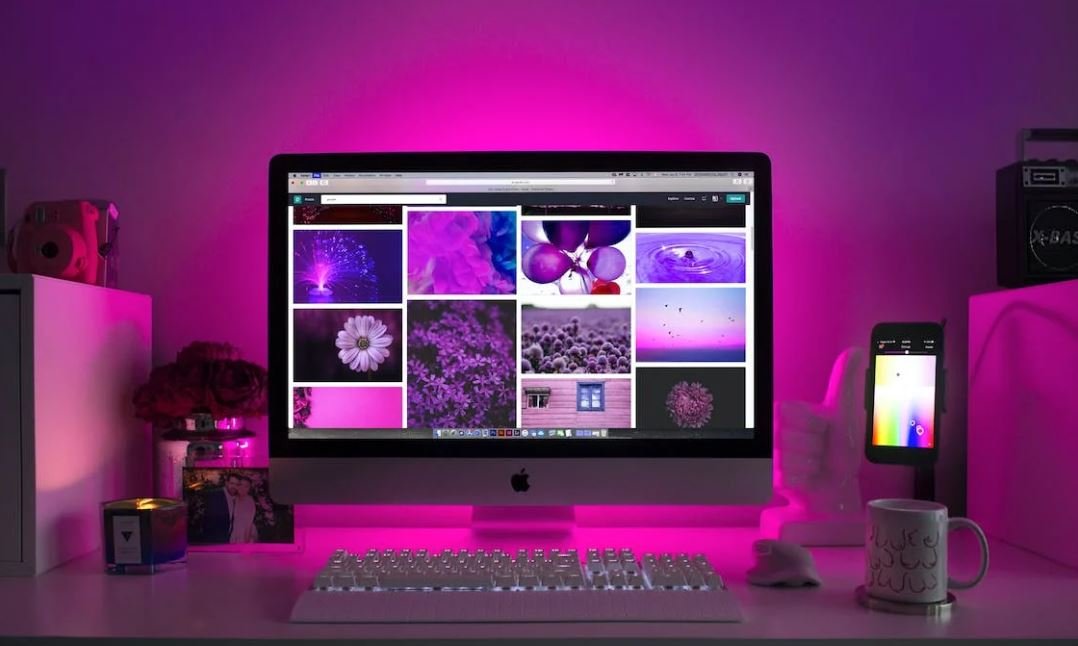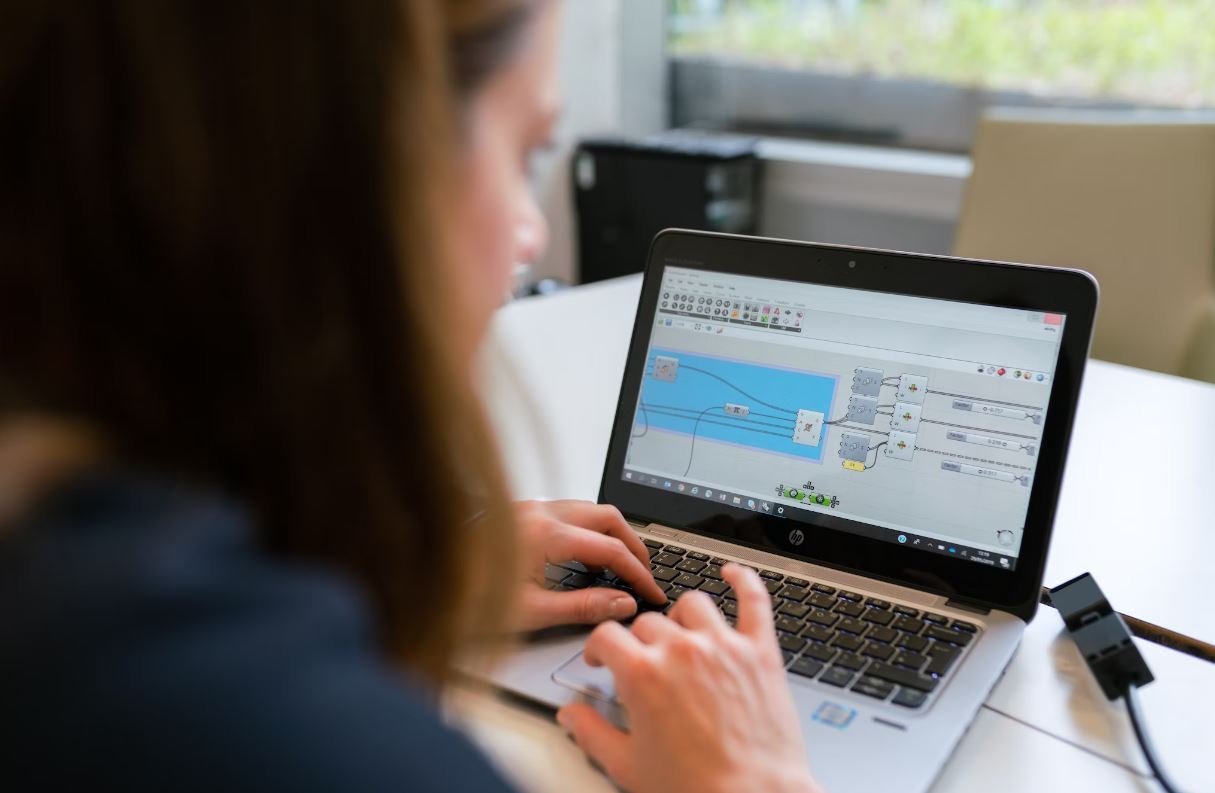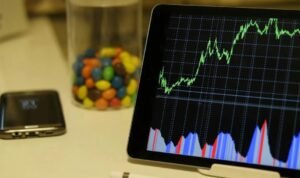Footage Green Screen
Green screens, also known as chroma key backgrounds, have become increasingly popular in the world of video production. This technique allows filmmakers and content creators to replace the green background with any desired image or video, creating visually stunning and immersive scenes. In this article, we will explore the benefits of using green screens, the process behind shooting with a green screen, and how to achieve professional-looking results.
Key Takeaways:
- Footage green screens enable the replacement of the green background with any desired image or video.
- They allow for visually stunning and immersive scenes to be created.
- The process of shooting with a green screen requires proper lighting and post-production editing.
- Professional results can be achieved with attention to detail and precision.
Benefits of Using Green Screens
Using green screens offers a multitude of benefits for filmmakers and content creators. The most significant advantage is the freedom it provides in creating any backdrop imaginable. Whether it’s a breathtaking landscape or an exciting action sequence, green screens make it possible to transport viewers to any desired location without leaving the studio. *With the right lighting, even intricate scenes can be convincingly brought to life.
The Green Screen Shooting Process
The process of shooting with a green screen involves several crucial steps. First, you need a well-lit green background, ensuring no shadows or wrinkles are visible. This ensures a clean and even surface for the post-production stage. *Remember to use lighting that is consistent with the intended final scene to avoid color inconsistencies or other discrepancies. Once the footage is shot, it goes through the editing phase, where the green background is replaced with the desired images or videos. *This post-production step requires precision and attention to detail to ensure seamless integration of the subjects and the background.
Professional-Looking Results
While working with green screens can be challenging, attention to detail and precision can help achieve professional-looking results. Here are some tips to enhance your footage:
- Ensure proper lighting setup to eliminate shadows and achieve a clean, evenly lit green background.
- Use high-quality cameras and lenses to capture sharp and detailed footage.
- Invest time in practicing and directing subjects to interact convincingly with the virtual environment.
- In post-production, make use of advanced software to seamlessly integrate the subjects and background.
| Green Screen Essentials | |
|---|---|
| Key Ingredient | Benefits |
| Green Screen |
|
| Proper Lighting |
|
It’s important to note that with the advancements in technology and software, the accessibility and affordability of green screens have increased significantly. Today, many professional-grade green screens are available for both commercial studios and independent creators at reasonable prices. *By incorporating green screens into your projects, you can unlock a world of creative possibilities and elevate your content to new heights.
| Green Screen Stats |
|---|
|
Conclusion
In conclusion, the use of green screens in video production allows for unlimited creative possibilities, creating visually stunning and immersive scenes. With careful attention to lighting, shooting, and post-production techniques, professional-looking results can be achieved. By embracing the power of green screens, content creators can take their projects to new heights of creativity.

Common Misconceptions
Footage Green Screen
One common misconception about footage green screen is that it is only used in film and television production. While it is true that green screens are commonly used in the entertainment industry, they also have practical applications in other fields. For example, green screens can be used in weather forecasting to superimpose graphics over the meteorologist, or in video editing to replace backgrounds in corporate training videos.
- Green screen technology is not limited to movies and TV shows.
- It can be applied in various industries including weather forecasting.
- Green screens are useful in replacing backgrounds in corporate videos.
Skill Requirements
Another misconception is that working with green screens requires advanced technical skills. In reality, with the advancements in technology and user-friendly software, using green screens has become more accessible to people with varying levels of expertise. Many video editing programs now offer built-in tools and guides to assist users in keying out the green screen, making it easier for beginners to incorporate green screen effects into their projects.
- Working with green screens is no longer limited to technical professionals.
- User-friendly software has made it easier to utilize green screen effects.
- Beginners can find built-in tools in video editing programs to assist in keying out the green screen.
Limitation to Only Green Screens
Many people assume that green screens are the only color that can be used for chroma keying. While green is the most commonly used color due to its contrast with human skin tones, other colors such as blue or even shades of gray can also be used for this purpose. The choice of color largely depends on the subject being filmed, the lighting conditions, and the desired outcome.
- Green is not the only color that can be used for chroma keying.
- Colors like blue or gray can also be used depending on the circumstances.
- Choice of color depends on the subject, lighting conditions, and desired outcome.
Perfectly Seamless Results
Some people expect that using a green screen will always result in a flawless, seamless composition. However, achieving this level of perfection can be challenging, especially in situations where the subject has fine details, transparency, or wispy hair. Factors such as lighting, shadows, and the quality of the green screen itself can also affect the final result. It often requires additional skills and post-processing techniques to ensure the composite looks natural and professional.
- Achieving a flawless composition with a green screen can be challenging.
- Fine details, transparency, and wispy hair can be difficult to work with.
- Additional skills and post-processing techniques may be necessary for natural-looking composites.
Costly Equipment
There is a misconception that using green screens requires expensive equipment. While professional-grade green screens and lighting setups can be costly, there are affordable alternatives available for those on a budget. DIY solutions using materials like fabric or paint can be effective for smaller projects or personal use. Additionally, advancements in technology have made it possible to achieve decent results with consumer-grade equipment, making green screen effects more accessible to a wider audience.
- Using green screens does not always require expensive equipment.
- Affordable alternatives and DIY solutions are available on a budget.
- Advancements in technology have made consumer-grade equipment sufficient for decent results.

Benefits of Using Green Screen in Filmmaking
Green screen, also known as chroma keying, is a technique widely used in filmmaking to replace the background of a video with a different image or footage during post-production. This allows filmmakers to create captivating and visually stunning scenes that would otherwise be difficult or expensive to achieve. In this article, we explore various aspects of using green screen in filmmaking, highlighting its benefits and showcasing impressive examples.
Enhanced Creative Possibilities
By utilizing green screen technology, filmmakers can transport their viewers to breathtaking locations, imaginary worlds, or historical periods without leaving the confines of a studio. The following table showcases successful films that have effectively used green screen to create immersive experiences:
| Film | Year | Green Screen Scene |
|---|---|---|
| Avatar | 2009 | Entire movie set on the fictional planet Pandora |
| The Lord of the Rings Trilogy | 2001-2003 | Various scenes featuring fantasy landscapes |
| Inception | 2010 | Breathtaking folding city scene |
Seamless Integration of Actors and CGI Elements
When blending live-action footage with computer-generated imagery (CGI), green screen technology allows actors to interact convincingly with non-existent elements or characters. The table below presents some notable examples:
| Film | Year | Green Screen Interaction |
|---|---|---|
| Life of Pi | 2012 | Protagonist floating on a lifeboat with a digital tiger |
| Harry Potter series | 2001-2011 | Countless scenes featuring magical creatures, spells, and environments |
| The Jungle Book | 2016 | Mowgli interacting with digitally-animated animal characters |
Time and Cost Efficiency
Using green screen techniques can save filmmakers considerable time and money by eliminating the need for location scouting and expensive set construction. The table below highlights blockbuster films that effectively utilized green screen and achieved significant cost savings:
| Film | Year | Budget | Green Screen Savings |
|---|---|---|---|
| Gravity | 2013 | $100 million | Savings of $15 million through green screen |
| The Matrix | 1999 | $63 million | Savings of $8 million through green screen |
| Mad Max: Fury Road | 2015 | $150 million | Savings of $20 million through green screen |
Unlimited Background Options
One of the key advantages of green screen technology is the ability to replace the background with any desired image or footage. The table below showcases different genres of films that have effectively utilized this feature:
| Film Genre | Examples |
|---|---|
| Science Fiction | Star Wars, Blade Runner, The Matrix |
| Historical | 300, Gladiator, Marie Antoinette |
| Comedy | Zoolander, Anchorman, Borat |
Realistic Special Effects
Green screen technology enables the incorporation of realistic special effects that would otherwise be impossible or dangerous to execute. The table below presents remarkable films that demonstrate the diverse range of special effects achieved using green screen:
| Film | Year | Noteworthy Special Effect |
|---|---|---|
| The Avengers | 2012 | Explosive city battle scene |
| Jurassic Park | 1993 | Interaction between live actors and lifelike dinosaurs |
| Interstellar | 2014 | Spacecraft docking sequence |
Inspiring Behind-the-Scenes Videos
Green screen technology provides an opportunity to understand the fascinating behind-the-scenes process of bringing imaginary worlds to life. The table below presents notable films that have released informative and captivating behind-the-scenes videos:
| Film | Year | Informative BTS Video |
|---|---|---|
| Guardians of the Galaxy | 2014 | “Creating the Galaxy” |
| The Hobbit Trilogy | 2012-2014 | “Production Videos” series |
| Iron Man | 2008 | “The Making of Iron Man” |
Achievement in Visual Effects
Green screen technology has been instrumental in achieving groundbreaking visual effects, earning various films critical acclaim and awards in the process. The table below showcases Academy Award-winning films recognized for their exceptional visual effects utilizing green screen:
| Film | Year | Academy Awards (Visual Effects) |
|---|---|---|
| Avatar | 2009 | Won |
| Inception | 2010 | Won |
| The Curious Case of Benjamin Button | 2008 | Won |
Immersive Virtual Reality Experiences
Green screen technology has expanded beyond traditional filmmaking, lending itself to unparalleled virtual reality (VR) experiences. The table below highlights notable VR productions enhanced through the use of green screen:
| Production | Year | Notable VR Experience |
|---|---|---|
| Notes on Blindness: Into Darkness | 2016 | Immersive documentary simulating blindness |
| Zero Latency | 2014-present | Multiplayer, free-roaming VR gaming experiences |
| Disney’s Star Wars: Secrets of the Empire | 2017-present | Interactive Star Wars-themed adventure |
Conclusion
With its ability to heighten creative possibilities, seamlessly integrate real and digital elements, and reduce production time and costs, green screen technology has become an invaluable tool in the film industry. From transporting viewers to imaginative worlds to creating stunning visual effects and immersive virtual reality experiences, the possibilities are limitless. As technology continues to advance, green screen will undoubtedly contribute to even more enthralling and unforgettable cinematic experiences in the future.
Frequently Asked Questions
What is green screen footage?
Green screen footage refers to video recordings where a person or object is filmed in front of a green or blue background. This background can be replaced with another image or video during post-production using special effects techniques.
What are the advantages of using green screen footage?
Using green screen footage allows for more flexibility and creativity in video production. It enables adding different backgrounds, special effects, or virtual sets, which may not have been possible during the actual filming. It also helps create a professional and polished look for videos.
Can I use green screen footage in any video editing software?
Yes, green screen footage can be used in most video editing software that supports chroma keying. Popular software such as Adobe Premiere Pro, Final Cut Pro, and Sony Vegas Pro provide options for easily replacing the green or blue background with another image or video.
Where can I find green screen footage?
There are several online platforms and websites where you can find green screen footage. Some popular options include stock footage websites like Shutterstock, Adobe Stock, and Pond5. You can also find free green screen footage on websites like YouTube and various green screen communities.
What are the different types of green screen footage available?
There are various types of green screen footage available, ranging from simple backgrounds to complex scenes. You can find green screen footage of landscapes, cityscapes, nature, abstract designs, and more. Additionally, you can also find footage specifically tailored for different purposes like news reporting, music videos, or product showcases.
What resolution and format is green screen footage typically available in?
Green screen footage is usually available in different resolutions ranging from standard definition (SD) to high definition (HD) and even 4K or higher. The format can vary but common formats include MP4, MOV, or AVI. It’s important to check the specifications of the footage you download to ensure compatibility with your editing software.
Can I create my own green screen footage?
Yes, you can create your own green screen footage by setting up a suitable green or blue background and recording your subject against it. Ensure proper lighting and a smooth, evenly lit background to achieve the best results. Additionally, you can purchase or create your own green screen backdrop.
Do I need professional equipment to use green screen footage?
While professional equipment can enhance the quality of your green screen footage, it is not always necessary. You can achieve satisfactory results using a basic setup consisting of a green or blue screen, appropriate lighting, and a decent camera. Post-production software and techniques also play a crucial role in achieving seamless integration.
What are some tips for effectively using green screen footage?
Some tips for effectively using green screen footage include:
- Ensure proper lighting to minimize shadows and achieve a consistent background color.
- Use a high-quality green screen backdrop to avoid any wrinkles or imperfections.
- Keep your subject a suitable distance away from the green screen to avoid spillage or color bleeding.
- Shoot in higher resolutions if possible to maintain the best quality during post-production.
- Experiment and practice with different angles, camera movements, and lighting setups to achieve desired effects.
Are there any copyright restrictions with green screen footage?
It depends on the specific green screen footage you are using. Some green screen footage may be subject to copyright restrictions, especially if you are using stock footage from a website. Ensure that you have the necessary usage rights or licenses to avoid any legal issues. Free green screen footage may have certain usage limitations, so always check the terms and conditions.




